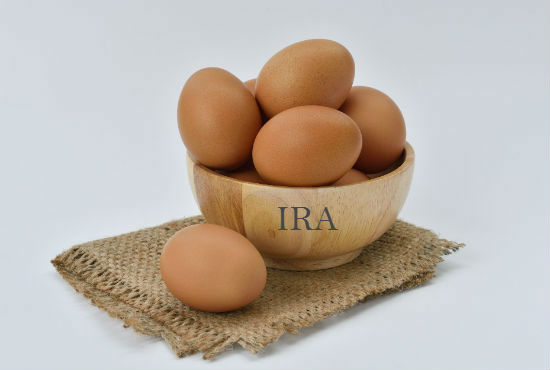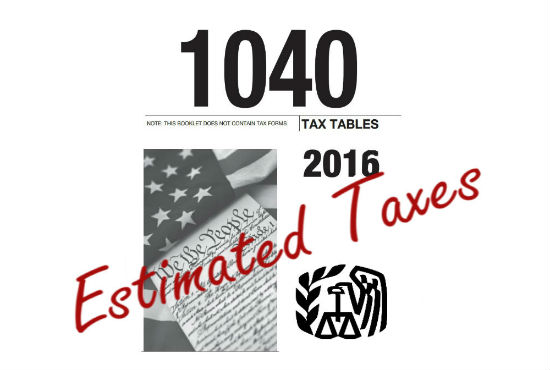By Justin Fundalinski, MBA | September 21, 2017
 In general , there are two ways to own property with somebody else and how you title it makes all the difference. Maybe over the years you have seen the acronyms JTWROS and TIC on an account statement, and maybe you even know what they stand for. But, do you know what happens to property titled as such when you die? This article focuses on sorting out the very subtle yet important technicalities between these two Joint ownership registrations.
In general , there are two ways to own property with somebody else and how you title it makes all the difference. Maybe over the years you have seen the acronyms JTWROS and TIC on an account statement, and maybe you even know what they stand for. But, do you know what happens to property titled as such when you die? This article focuses on sorting out the very subtle yet important technicalities between these two Joint ownership registrations.
JTWROS and TIC – What do these acronyms stand for?
JTWROS stands for Joint Tenancy with Right of Survivorship and TIC stands for Tenants in common. A couple of letters make all the difference! Let’s take a look at ownership rights, how the property is treated when one co-owner dies, and how basis is stepped up for whoever inherits this property.
Ownership rights:
JTWROS gives each co-owner equal rights to the entire asset or account. That is, both parties own 100% of the property (it’s not split 50/50). If the asset is sold, the consent of both parties is often necessary. You cannot just cash out 50% and ask for a check to be made out directly to you.
On the other hand, TIC assigns an interest percentage to each owner. That is, one party can own 30% and the other 70% (or whatever split is appropriate). You can sell your portion of the asset independently or you could contribute more to the asset independently. As you contribute to or sell parts of the asset your ownership interests adjust up and down pro-rata.
When you die:
When you die the titling distinction becomes very apparent. With JTWROS assets the property is not disposed of via your will or state intestacy law. It is passed directly to the surviving owner(s) without going through probate, and the surviving owner then owns 100% of the asset/account. For my tax geeks out there, the amount of the property that is passed through the gross estate for estate tax purposes depends on whether or not the joint owners are spouses. If they are spouses then 50% of the asset automatically passes through the estate. If not, then it depends on the decedent’s percentage of contribution.
TIC is very different. The assets are disposed of via your will or state intestacy law and must go through probate. The property is not passed directly to the other property owner and will not be passed to the other owner unless your will or intestacy law says so. Since there are independent ownership interests, only the portion attributable to the decedent goes through probate and is eventually inherited based on what the will or intestacy law dictates. Of course, this share of the decedents account is passed through their gross estate for estate tax purposes.
Basis:
Basis is essentially the cost of the asset that is not subject to taxes when you receive it back. In a very simplified example, if I bought a rental house for $100,000 and then later sold it for $150,000 I would be taxed only on the $50,000 gain and my $100,000 that I originally contributed (it’s basis) is received back tax free. However, if instead of selling the property that day I died then my beneficiary would receive a “step up” in basis bringing the basis of the property up to $150,000. Now my beneficiary could turn around and sell the property for $150,000 and not pay taxes at all. Easy enough right? Well, often is much more convoluted than this and account titling plays its hand here too.
Reflect back to the previous paragraphs that touch on how much of the property passes through the decedent’s gross estate. This is your guiding light regarding how much of a step up in basis is received. If it passes through the estate, it receives a step up in basis.
JTWROS property’s step up in basis depends on whether or not the owners are married. If married there will be a 50% step up in basis. If not, it is based on the decedent’s percentage of contribution.
TIC property receives a step up in basis depending on the ownership interest percentage of the decedent.
In conclusion:
Titling matters a lot! If you don’t know the ins and outs of ownership, what happens when you die, and how basis is affected you could be putting yourself or your heirs and a major disadvantage due to a silly titling mistake. We recommend you seek professional guidance when making/reviewing such decisions.


 With the real estate market showing strong growth year over year in Northern Colorado we have seen many clients purchasing rental properties to hopefully benefit from higher rents and rapid capital appreciation. This month’s article is not going to dig into the viability of such investing; rather it will overlay a perspective on how rental income, depreciation, and capital appreciation of rental properties affect one’s taxes now and later.
With the real estate market showing strong growth year over year in Northern Colorado we have seen many clients purchasing rental properties to hopefully benefit from higher rents and rapid capital appreciation. This month’s article is not going to dig into the viability of such investing; rather it will overlay a perspective on how rental income, depreciation, and capital appreciation of rental properties affect one’s taxes now and later.  I was perusing through the introduction of Wade Pfau’s (a well published, well researched, retirement planning guru) book on Reverse Mortgages and I was just in awe as to how precisely his principals matched up to our office’s in regards to retirement planning. That said, he concisely addressed the retirement risks that that we at the office are ever challenged to overcome for our clients. In this month’s newsletter I wish to share his bullet points with some additional perspective.
I was perusing through the introduction of Wade Pfau’s (a well published, well researched, retirement planning guru) book on Reverse Mortgages and I was just in awe as to how precisely his principals matched up to our office’s in regards to retirement planning. That said, he concisely addressed the retirement risks that that we at the office are ever challenged to overcome for our clients. In this month’s newsletter I wish to share his bullet points with some additional perspective. With the House passing a bill to replace the Affordable Care Act (better known as ObamaCare), an excellent cost savings strategy for retirees under the age of 65 could be lost. However, there is a long road for the new health care bill before anything is finalized (or even approved by the Senate for that matter). The strategy discussed this month uses the rules set forth by the Affordable Care Act to maximize the Premium Tax Credit (a tax credit to that is used to offset healthcare premiums for those who purchase health insurance in the “Health Insurance Marketplace.”)
With the House passing a bill to replace the Affordable Care Act (better known as ObamaCare), an excellent cost savings strategy for retirees under the age of 65 could be lost. However, there is a long road for the new health care bill before anything is finalized (or even approved by the Senate for that matter). The strategy discussed this month uses the rules set forth by the Affordable Care Act to maximize the Premium Tax Credit (a tax credit to that is used to offset healthcare premiums for those who purchase health insurance in the “Health Insurance Marketplace.”) Annuity income can play an important role in retirement planning because if used correctly, it can provide a steady stream of income for the rest of the annuitant’s life. However, while steady and secure income simplifies finances for annuitants (especially as they age), understanding how annuities are taxed becomes a bit more complex (not that you would ever have to figure it out on your own since the insurance companies will always report to you what is taxable, but good to know nonetheless). In this month’s article I focus on how different annuities are taxed.
Annuity income can play an important role in retirement planning because if used correctly, it can provide a steady stream of income for the rest of the annuitant’s life. However, while steady and secure income simplifies finances for annuitants (especially as they age), understanding how annuities are taxed becomes a bit more complex (not that you would ever have to figure it out on your own since the insurance companies will always report to you what is taxable, but good to know nonetheless). In this month’s article I focus on how different annuities are taxed. There are some very confusing rules when it comes to whether or not you are able to contribute to Traditional IRAs and Roth IRAs and whether or not your contribution is deductible. In this month’s article I aim to clarify these rules so you will be able to catch your mistakes before the IRS subjects you to a nasty penalty.
There are some very confusing rules when it comes to whether or not you are able to contribute to Traditional IRAs and Roth IRAs and whether or not your contribution is deductible. In this month’s article I aim to clarify these rules so you will be able to catch your mistakes before the IRS subjects you to a nasty penalty.


 We recently came across a case in which a retired PERA employee worked many of her years during the time when employees did not contribute to Medicare taxes, but also worked some of her years during a time that they did contribute to Medicare taxes. The end result was that she did not earn her 40 quarters of credit to qualify for “free” Medicare Part A insurance (the hospital insurance side of Medicare), but instead fell short by just a few credits. While PERA has some options available to employees who do not qualify for free Part A, the options are not clear cut from a financial position and we were forced examine them deeply. It came down to a couple factors and in this month’s newsletter we want to share some of our findings for those who participate in PERACare for retirees currently or for those who may be faced with some of the same options in the future.
We recently came across a case in which a retired PERA employee worked many of her years during the time when employees did not contribute to Medicare taxes, but also worked some of her years during a time that they did contribute to Medicare taxes. The end result was that she did not earn her 40 quarters of credit to qualify for “free” Medicare Part A insurance (the hospital insurance side of Medicare), but instead fell short by just a few credits. While PERA has some options available to employees who do not qualify for free Part A, the options are not clear cut from a financial position and we were forced examine them deeply. It came down to a couple factors and in this month’s newsletter we want to share some of our findings for those who participate in PERACare for retirees currently or for those who may be faced with some of the same options in the future.


